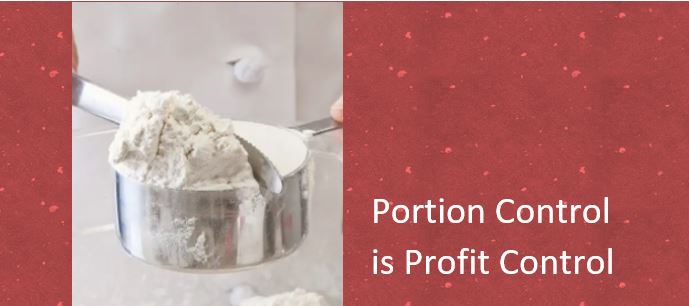Dining outlets that have a clear understanding of portion control are able to regulate food costs, minimize waste and increase profitability. The best way to think about portion control is to equate it to profit control.
To create a portion control system in your foodservice kitchen, you must measure out all ingredients for your recipes according to servings. Chicken, beef and fish should all be weighed, shredded cheese can be measured and stored in exact portions in cups or bags. Tools to have on hand include commercial kitchen scales, measuring cups, and ingredient scoops. Rite-size servers and dishers are ideal to use for meal assembly. Having the proper kitchen portion control utensils can make portion control easier to implement and ensure consistency.
In institutional foodservice, the value of proper portioning can add up quickly. A ½ oz overage on 100 portions a day can lead to losses thousands of dollars in profit annually. Imagine that a staff member is not accurately measuring portions and is serving and extra ½ oz on every serving and on a daily basis there are 400 meals being served. That ½ oz now ads up to 12-1/2 pounds of additional food being used that day. If this ingredient had a cost of only $1 per pound, then the annualized loss from overserving only ½ oz daily would amount to $3,000. Along with the additional expense, there is a very real opportunity for a there to be a shortage at the end of production of that ingredient, causing a scramble in the kitchen to hit nutritional goals and to make up for the missing product.
Investing in the proper portion control utensils and equipment for your commercial kitchen will make managing your menu and bottom line much easier in the long run.
